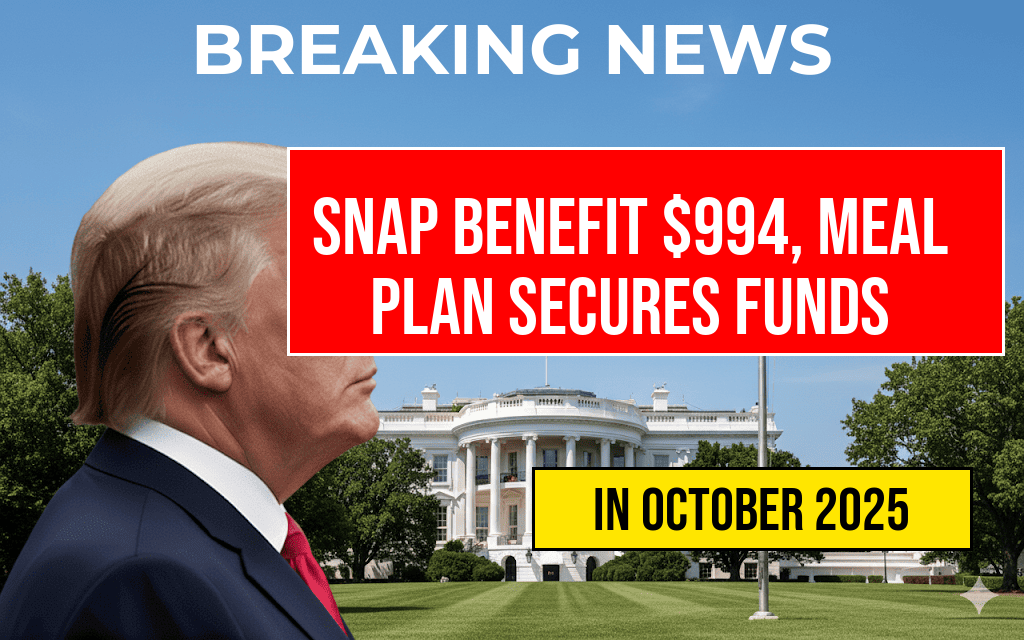As the threat of a prolonged government shutdown persists, millions of Americans relying on SNAP benefits face increased financial uncertainty. Currently, individuals aged 7 and older receiving assistance are allocated an average of $1,571 monthly to cover essential expenses, including food, housing, and other basic needs. With federal agencies operating under temporary funding, there is widespread concern about potential disruptions to benefit distributions, which could leave vulnerable households scrambling for alternative resources. This situation underscores the urgent need for households to adopt strategic budgeting practices to navigate possible income shortfalls and maintain stability during uncertain times.
Understanding the Impact of a Government Shutdown on SNAP Benefits
The Supplemental Nutrition Assistance Program (SNAP), formerly known as food stamps, serves approximately 43 million Americans, providing critical support amid rising living costs. The program’s funding is contingent upon federal appropriations, and a shutdown halts or delays the issuance of benefits, leaving many recipients uncertain about their financial security. When a shutdown occurs, states often rely on emergency plans or reserve funds, but these measures are temporary and may not fully cover ongoing needs. Experts warn that prolonged shutdowns could result in delayed benefit payments, reduced purchasing power, and increased food insecurity among low-income families.
Potential Challenges During a Prolonged Shutdown
- Delayed benefit issuance due to federal processing delays
- Reduced benefits if emergency reserves are exhausted
- Increased demand at local food banks and community assistance programs
- Difficulty in planning household budgets amidst unpredictable income streams
Current SNAP Benefit Levels and Who They Cover
| Household Size | Average Monthly Benefit |
|---|---|
| 1 person | $250 |
| 2 people | $459 |
| 3 people | $607 |
| 4 people | $746 |
| 5 or more | $1,071 |
For households with members aged 7 and older, the average benefit of $1,571 per month reflects larger family sizes and higher needs. These figures are based on recent data from the U.S. Department of Agriculture, illustrating the vital role SNAP plays in ensuring food security across diverse household structures.
Essential Budgeting Tips Amid Potential Benefits Disruption
In the face of possible benefit delays or reductions, recipients must prioritize financial planning to stretch limited resources. Below are practical strategies to manage household expenses effectively:
Create a Detailed Budget
- Identify essential expenses — prioritize rent or mortgage, utilities, and food.
- Track income and expenses — use budgeting apps or simple spreadsheets to monitor cash flow.
- Adjust discretionary spending — cut back on non-essential purchases until stability returns.
Leverage Community Resources
- Contact local food banks and meal programs for supplemental assistance.
- Explore community centers offering free or low-cost services.
- Register for emergency assistance programs available through local agencies.
Plan for Unexpected Expenses
- Build a small emergency fund if possible, even with minimal savings.
- Prioritize paying for critical needs first, such as housing and utilities.
- Consider temporary side gigs or community-based employment opportunities.
Policy and Advocacy Considerations
Advocates continue to push for legislation that safeguards SNAP benefits during fiscal impasses. Discussions in Congress often focus on including emergency funding measures to prevent disruptions, especially amid ongoing economic pressures. Meanwhile, state agencies are exploring contingency plans to minimize the impact on beneficiaries, emphasizing the importance of community-based support systems. Staying informed about legislative developments through reputable sources like USDA Food and Nutrition Service can help recipients understand their rights and available resources during uncertain periods.
Resources for SNAP Recipients During a Shutdown
- SNAP Outreach: Visit your state’s Department of Social Services website for updates and assistance programs.
- Food Assistance Networks: Contact local food banks or charities for immediate support.
- Policy Updates: Follow federal and state legislative news to stay informed about potential relief measures.
As the situation develops, families dependent on SNAP benefits must remain vigilant and proactive. Securing community support, adjusting household budgets, and staying informed about policy changes can help mitigate the impact of a government shutdown on essential needs.
Frequently Asked Questions
What are the current SNAP benefit amounts for individuals aged 7 and older?
The SNAP benefits for individuals aged 7 and older are approximately $1,571 monthly, providing essential support for food and nutrition needs.
How can ongoing government shutdown affect SNAP benefits?
If the government shutdown continues, it may lead to delays or reductions in SNAP benefit distributions, making it crucial for recipients to adopt budget tips to manage their resources effectively.
What are some budget tips for managing SNAP benefits during a prolonged shutdown?
Some effective budget tips include planning meals ahead, purchasing in bulk, prioritizing nutritious yet affordable foods, and tracking expenses carefully to maximize the value of your SNAP benefits.
Who is eligible for SNAP benefits?
Eligibility for SNAP benefits typically depends on household income, size, and other factors. Individuals aged 7 and older in qualifying households can receive up to $1,571 monthly, subject to specific criteria.
How can I stay informed about updates on SNAP benefits during the government shutdown?
You can stay informed by visiting official government websites, signing up for alerts from local social services agencies, and following reputable news sources for the latest updates on SNAP policies and benefit distributions.






